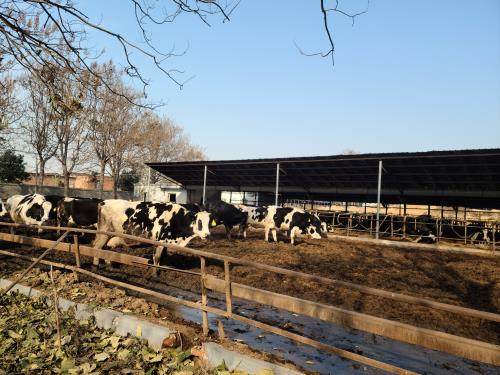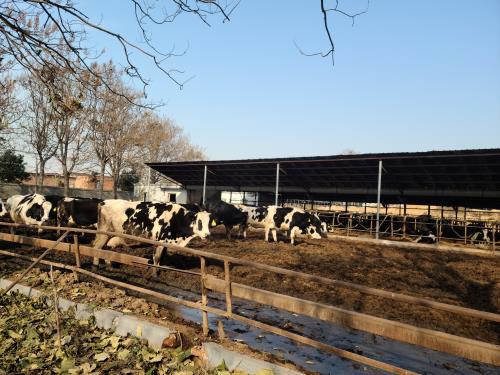In the world of modern livestock management, ensuring the health and productivity of cows is crucial for maximizing efficiency and profitability. One of the most important diagnostic tools in veterinary medicine for cattle is BXL cows Veterinary ultrasound. This technology provides veterinarians and farmers with real-time, non-invasive imaging that allows for the early detection of health issues, pregnancy monitoring, and assessment of reproductive health. In this article, we’ll dive into how BXL cows veterinary ultrasound works, its benefits, and why it’s a valuable investment for cattle farmers and veterinary professionals.

What is BXL Cows Veterinary Ultrasound?
BXL cows veterinary ultrasound refers to a line of ultrasound machines specifically designed for the veterinary care of cattle. Ultrasound technology uses high-frequency sound waves to produce images of the internal structures of a cow’s body, helping veterinarians detect various conditions without the need for invasive procedures.
BXL ultrasound machines are widely used in the cattle industry due to their high resolution, ease of use, and ability to deliver accurate, real-time images. These machines are capable of assessing a wide range of conditions, from pregnancy checks and fetal monitoring to identifying internal health problems such as reproductive disorders, organ diseases, or injuries.
How Does BXL Cows Veterinary Ultrasound Work?
BXL veterinary ultrasound works by sending sound waves into the cow’s body via a transducer, or probe. These sound waves bounce off tissues, and the returning echoes are processed by the ultrasound machine to create an image of the internal structures. The procedure is non-invasive, meaning there is no need for surgery or anesthesia, making it an ideal choice for monitoring both routine and emergency cases in cattle.
Types of Ultrasound Probes for Cattle
BXL ultrasound systems are equipped with various probes to cater to different diagnostic needs:
- Linear Probe: Often used for imaging the superficial structures like the udder, liver, or for muscle and tendon injuries.
- Convex Probe: Ideal for deeper tissues and organs, such as the uterus, heart, and abdominal organs.
- Endocavity Probe: Inserted into the cow’s rectum for internal imaging of the reproductive system, including pregnancy checks and monitoring fetal development.
The Imaging Process
To perform a BXL ultrasound on a cow, the veterinarian will typically clean the area to be scanned and apply ultrasound gel to the skin or rectum (in case of internal imaging). The probe is then moved across the area, emitting sound waves and capturing the returning echoes. The real-time images or videos generated by the ultrasound will be displayed on a monitor, providing instant feedback for the veterinarian.
Common Applications of BXL Cows Veterinary Ultrasound
1. Pregnancy Diagnosis and Monitoring
One of the most important applications of BXL cows veterinary ultrasound is pregnancy detection. Early detection of pregnancy is vital for herd management, as it allows farmers to make informed decisions about feeding, care, and management. Ultrasound allows for accurate pregnancy confirmation as early as 30 days post-breeding, compared to traditional palpation methods that require a longer time frame.
- Early Pregnancy Detection: BXL ultrasound can detect pregnancy as early as 28-30 days post-breeding, helping farmers plan for calving and manage the nutritional needs of pregnant cows.
- Monitoring Fetal Development: Ultrasound provides valuable information about the health and development of the fetus, allowing veterinarians to monitor fetal growth, identify potential problems, and intervene early if necessary.
- Twins Detection: Twins can be detected early, allowing farmers to manage the risks associated with multiple pregnancies, such as dystocia (difficult calving).
2. Reproductive Health and Fertility Management
Reproductive health is critical to the productivity of any dairy or beef herd. BXL ultrasound helps veterinarians evaluate the reproductive system of cows and diagnose issues such as ovarian cysts, uterine infections, or abnormalities that could affect fertility. With accurate reproductive monitoring, farmers can optimize breeding schedules and improve herd fertility rates.
- Ovarian Health: Ultrasound can assess the size and condition of the ovaries, ensuring that cows are in optimal breeding condition.
- Endometrial Health: The uterus can be checked for abnormalities like infections or fluid buildup, which could impair fertility or lead to complications during pregnancy.
3. Health Monitoring and Disease Detection
BXL cows veterinary ultrasound is also valuable for diagnosing a wide range of internal health issues in cattle. From detecting liver abscesses to diagnosing heart conditions, ultrasound can provide insights into the health of organs and tissues that might not be visible through other diagnostic methods like blood tests or physical examination.
- Liver and Abdominal Health: Ultrasound can help detect liver abscesses, which are common in cattle, as well as gastrointestinal problems like bloating or intestinal obstructions.
- Heart and Circulatory Health: BXL ultrasound can assess the heart’s condition, including detecting signs of heart disease or abnormalities in blood flow.
- Musculoskeletal Injuries: For cattle that have suffered from injuries, ultrasound can be used to assess damage to tendons, ligaments, and muscles, aiding in the treatment and recovery process.
4. Calf Health and Monitoring
Monitoring the health of the calf in utero is essential for ensuring its survival and growth. Ultrasound allows veterinarians to track fetal growth patterns, detect signs of distress, and even assess the health of the placenta, helping to ensure that calves are born healthy and strong.
Benefits of BXL Cows Veterinary Ultrasound
1. Non-Invasive and Stress-Free
One of the biggest advantages of BXL ultrasound technology is that it is non-invasive. Unlike some diagnostic procedures, ultrasound doesn’t require sedation or surgery, which means it’s much less stressful for the cows and safer for both the animal and the veterinary team.
2. Real-Time Imaging for Immediate Decisions
BXL ultrasound provides real-time images, allowing veterinarians to make immediate diagnostic decisions. This capability is especially important in emergency situations, such as diagnosing pregnancy complications, internal bleeding, or injuries that require prompt intervention.
3. Early Disease Detection and Prevention
Early detection of diseases and conditions can prevent serious health problems from developing. With BXL ultrasound, veterinarians can catch issues such as uterine infections, liver damage, and reproductive abnormalities before they become major concerns. This early intervention helps improve herd health and reduces treatment costs in the long run.
4. Improved Herd Management
Regular ultrasound checks can help optimize herd management by providing data on the reproductive status of cows, pregnancy success rates, and overall health. This information can be used to adjust breeding strategies, feeding regimens, and overall herd care, leading to higher productivity and profitability.
5. Increased Reproductive Efficiency
By detecting issues such as ovarian cysts or uterine infections early, BXL ultrasound can improve reproductive outcomes. Cows that are bred at the right time and have optimal reproductive health are more likely to produce healthy calves, contributing to a more efficient and profitable operation.
Cost of BXL Cows Veterinary Ultrasound
The cost of BXL cows veterinary ultrasound services varies depending on factors such as location, the type of ultrasound needed, and whether it is a routine checkup or an emergency procedure. On average, a basic ultrasound exam may range from $100 to $300 per cow, with prices rising for more complex procedures or follow-up visits. While ultrasound technology requires an upfront investment, it can save money in the long run by preventing costly health issues and improving herd productivity.








